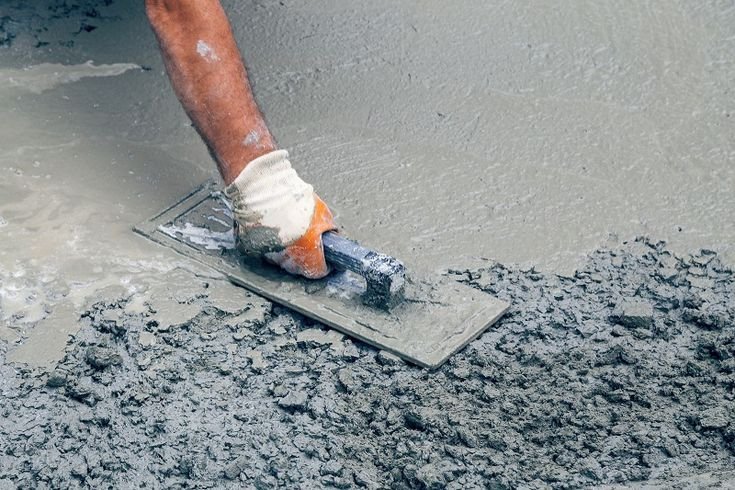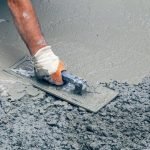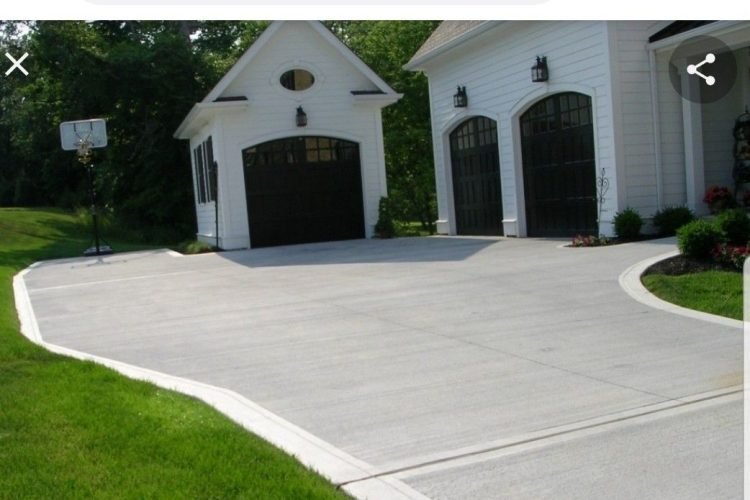
Concrete is widely known for its durability and strength, making it a popular choice for a variety of surfaces, including driveways, sidewalks, patios, and foundations. However, even the toughest concrete surfaces are susceptible to cracks and damage over time due to wear and tear, extreme weather conditions, heavy usage, and other external factors. When cracks, chips, or other damages appear in your concrete, it’s crucial to address the problem promptly to prevent further damage and maintain the safety, stability, and aesthetics of your property.
This article explores the common causes of concrete damage, the importance of professional concrete repair services, and the process of repairing cracks and other forms of damage. By understanding how expert concrete repair works, you can make informed decisions on how to protect and restore your concrete surfaces for long-lasting durability and a polished appearance.
Common Causes of Concrete Damage
Before diving into the repair process, it’s important to understand what causes concrete to crack or become damaged. Concrete is a sturdy material, but certain factors can lead to deterioration over time.
1. Weather Conditions
Extreme weather conditions, such as freezing temperatures, intense heat, or heavy rainfall, can cause concrete to expand and contract, which often results in cracks. In colder climates, the freeze-thaw cycle can lead to concrete breaking down, as water trapped in the surface expands when it freezes, causing stress on the material.
2. Heavy Loads and Impact
Concrete is built to withstand heavy loads, but over time, constant pressure from vehicles, heavy equipment, or constant foot traffic can cause damage. Potholes or cracks may appear when the surface is subjected to too much force or impact.
3. Improper Installation
If the concrete was improperly mixed, poured, or cured during installation, it may be more prone to cracking or damage. Inadequate drainage or failure to prepare the surface properly can lead to uneven settling and cracking.
4. Shifting Soil or Ground Settling
As the ground beneath your concrete shifts or settles, it can cause the concrete to crack or sink. This issue is especially common in areas with expansive soil that changes in volume due to moisture fluctuations.
5. Chemical Exposure
Exposure to harsh chemicals, including de-icing salts in winter, can degrade concrete and lead to cracks, surface spalling, or other forms of damage.
The Importance of Expert Concrete Repair Services
While DIY solutions may seem tempting, expert concrete repair services offer a range of benefits that ensure the job is done correctly and effectively. Professional repair technicians have the experience, skills, and tools necessary to identify the root cause of the damage and apply the most appropriate solution.
• Quality and Expertise
Concrete repair experts have extensive knowledge of concrete materials, types of damage, and repair techniques. They can diagnose issues accurately and recommend the best solutions, ensuring that the repair is long-lasting and effective.
• Specialized Equipment
Concrete repair involves specialized tools and equipment to properly patch, fill, or resurface damaged areas. Professionals have access to high-quality materials and machinery that ensure a durable, smooth finish.
• Safety and Stability
Repairing concrete cracks and damage without proper knowledge and equipment can result in unstable repairs. A professional will ensure that the concrete is structurally sound and safe to use after the repair is completed.
• Aesthetic Restoration
Over time, concrete surfaces may lose their appearance due to stains, cracks, or surface damage. Expert repair services can restore the appearance of the concrete, making it look as good as new.
• Cost-Effectiveness in the Long Run
Ignoring concrete damage or attempting an improper repair can lead to more extensive and expensive issues later on. Professional repairs are an investment that can save you money by preventing future damage and the need for a full replacement.
Concrete Crack Repair Process
The process of repairing cracks and damage in concrete typically involves several steps. Here’s a breakdown of what you can expect when working with an expert concrete repair service.
1. Assessment and Inspection
The first step in the repair process is a thorough inspection of the concrete surface. A professional will evaluate the extent of the damage and determine whether it’s a surface crack or a deeper structural issue. They will also identify any underlying causes, such as poor drainage or soil movement, that may need to be addressed to prevent future damage.
2. Preparation of the Area
Before repairs can begin, the damaged area must be cleaned and prepped. This typically involves removing debris, dirt, and loose concrete from the cracks or damaged surface. In some cases, the repair expert may need to widen the cracks slightly to ensure that the repair material adheres properly.
3. Applying Repair Material
For smaller cracks and surface damage, a concrete patching compound or crack filler is used to fill in the damaged area. This material is applied using specialized tools to ensure that it fills the crack completely and smoothly. For larger repairs, concrete resurfacing or a more extensive patching technique may be required.
4. Smoothing and Leveling
Once the repair material is applied, the surface is smoothed and leveled to blend seamlessly with the surrounding concrete. This helps restore the aesthetic appeal of the surface and ensures a consistent texture.
5. Curing and Sealing
After the repair material has been applied and smoothed, it needs time to cure and set. This can take anywhere from a few hours to a couple of days, depending on the type of repair material used. After curing, the repaired surface is often sealed to protect it from moisture, chemicals, and wear, enhancing its durability and appearance.
Common Types of Concrete Damage and Their Repairs
• Hairline Cracks
Hairline cracks are typically the result of normal wear and tear or settling. These cracks can be filled with a crack filler or a concrete sealant to prevent them from expanding.
• Large Cracks
Larger cracks or gaps may require more extensive repairs, such as filling with a concrete patch or resurfacing the entire section. If the cracks are deep, professional experts may inject the cracks with a special epoxy or polyurethane resin to restore the integrity of the surface.
• Potholes
Potholes in concrete are typically caused by wear and tear, poor drainage, or freezing temperatures. To repair potholes, the damaged area is excavated, cleaned, and filled with a durable concrete mixture. The surface is then smoothed and sealed.
• Surface Spalling
Spalling occurs when the surface of the concrete begins to peel, flake, or deteriorate. This can be repaired by cleaning the area, applying a concrete patching compound, and resealing the surface to prevent further damage.
Preventing Future Concrete Damage
While expert repairs can restore the functionality and aesthetics of your concrete surfaces, preventative maintenance is key to extending their lifespan and minimizing future damage. Here are some tips for maintaining your concrete surfaces:
- Seal Concrete Regularly: Concrete sealing helps protect the surface from moisture, stains, and chemical damage. It’s recommended to seal concrete every 1-3 years, depending on usage and weather conditions.
- Maintain Proper Drainage: Ensure that water flows away from concrete surfaces to prevent pooling and water damage. Consider installing proper drainage systems or grading your yard to redirect water.
- Regular Inspections: Conduct regular inspections of your concrete surfaces to spot any cracks, chips, or other damage early. Prompt repairs can prevent small issues from turning into larger problems.
- Avoid Harsh Chemicals: Minimize the use of de-icing salts or other harsh chemicals that can break down concrete over time.
Conclusion
Expert concrete repair services are essential for restoring your concrete surfaces and ensuring they remain functional, safe, and attractive for years to come. Whether you’re dealing with cracks, potholes, or surface spalling, professional repair services offer the knowledge, tools, and materials needed to restore your concrete surfaces to their original condition. By addressing damage early and performing regular maintenance, you can protect your concrete investments and prevent costly repairs in the future. Don’t wait until cracks and damage worsen—contact a concrete repair expert today for a durable and long-lasting solution.
FAQs
Q1: How long do concrete repairs last?
A: With proper maintenance, concrete repairs can last several years or even longer, depending on the severity of the damage and the materials used.
Q2: Can I repair cracks in my concrete myself?
A: While small cracks can be repaired by homeowners, larger or structural cracks should be handled by professionals for the best results and safety.
Q3: How much does concrete repair cost?
A: The cost of concrete repair depends on the extent of the damage and the type of repair needed. A professional repair service can provide an accurate estimate after assessing the damage.
Q4: Can concrete cracks be prevented?
A: While cracks can’t always be prevented, regular maintenance, proper drainage, and sealing can help minimize the risk of cracks and damage.
Q5: Will repairing concrete prevent further damage?
A: Yes, repairing cracks and damage promptly prevents water infiltration and further deterioration, extending the lifespan of the concrete surface.





